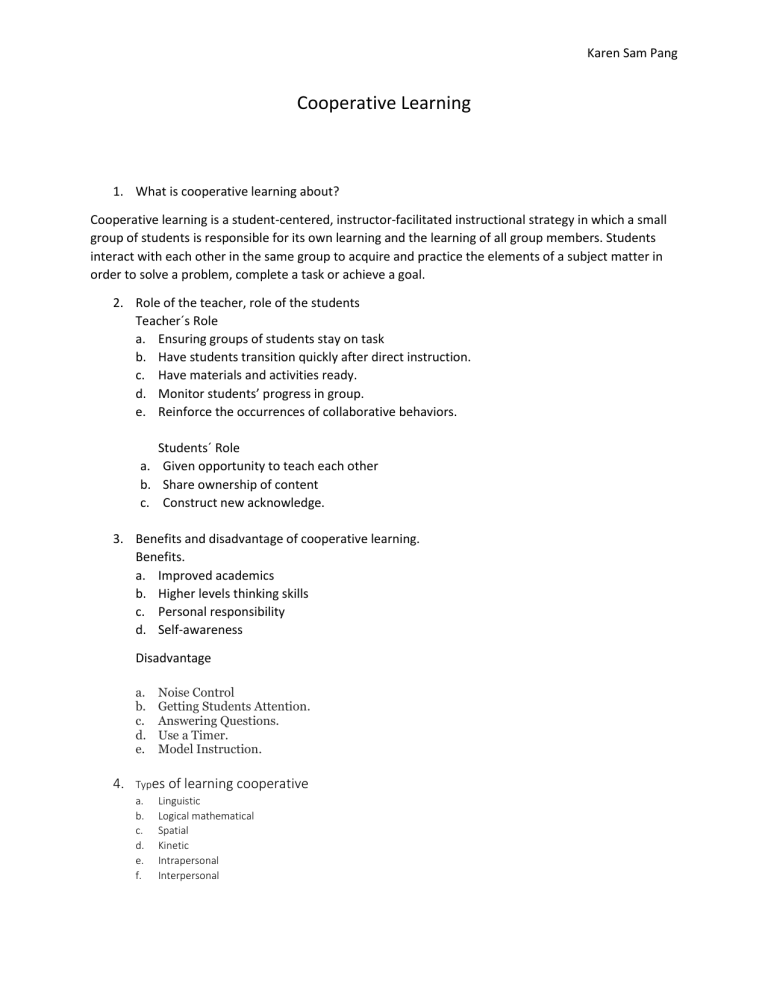
Karen Sam Pang Cooperative Learning 1. What is cooperative learning about? Cooperative learning is a student-centered, instructor-facilitated instructional strategy in which a small group of students is responsible for its own learning and the learning of all group members. Students interact with each other in the same group to acquire and practice the elements of a subject matter in order to solve a problem, complete a task or achieve a goal. 2. Role of the teacher, role of the students Teacher´s Role a. Ensuring groups of students stay on task b. Have students transition quickly after direct instruction. c. Have materials and activities ready. d. Monitor students’ progress in group. e. Reinforce the occurrences of collaborative behaviors. Students´ Role a. Given opportunity to teach each other b. Share ownership of content c. Construct new acknowledge. 3. Benefits and disadvantage of cooperative learning. Benefits. a. Improved academics b. Higher levels thinking skills c. Personal responsibility d. Self-awareness Disadvantage a. b. c. d. e. 4. Noise Control Getting Students Attention. Answering Questions. Use a Timer. Model Instruction. Types of learning cooperative a. Linguistic b. Logical mathematical c. Spatial d. Kinetic e. Intrapersonal f. Interpersonal Karen Sam Pang 5. Some examples of cooperative learning a. Mapping stories b. Writing journals c. Dancing d. Identify insects e. Interviews
